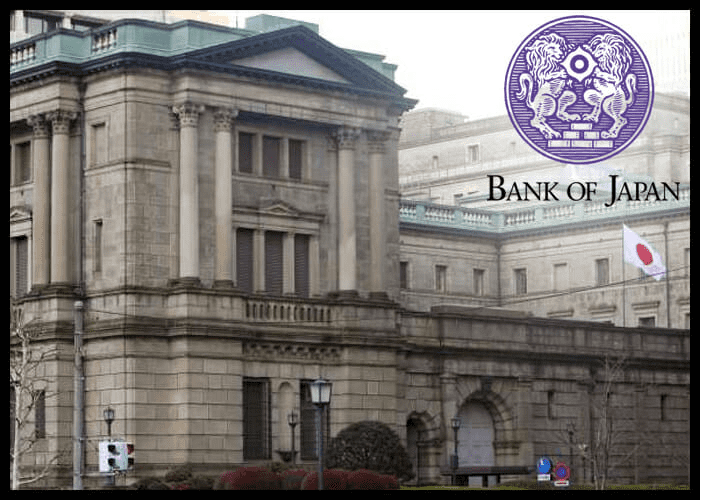Forex Central Bank Interventions: Actions Taken by Central Banks to Influence Currency Values
Welcome to the ultimate guide on Forex central bank interventions. In this comprehensive article, we will delve into the intricate world of central bank actions and their profound influence on currency values. Whether you are a seasoned forex trader or a curious learner, this article will provide you with deep insights into how central banks wield their power to shape global economic landscapes.
Table Content
1. Understanding Central Bank Interventions
2. The Goals of Central Bank Interventions
3. Types of Central Bank Interventions
4. Central Bank Interventions Across the Globe
5. The Impact of Central Bank Interventions
6. Strategies for Traders
7. Footnote
8. FAQs
Understanding Central Bank Interventions
Central banks are the primary financial institutions responsible for regulating monetary policies in a country or group of countries. They play a pivotal role in managing currency values to foster economic stability and growth. Central bank interventions involve deliberate actions taken to influence currency exchange rates. These interventions can take various forms, each with its unique impact on the forex market.

The Goals of Central Bank Interventions
Central banks execute interventions with specific objectives in mind. These goals can vary depending on the economic conditions and the country's needs. Some common goals include:
- Exchange Rate Stability: Central banks aim to maintain a stable exchange rate to prevent excessive volatility that could disrupt international trade and investments.
- Economic Competitiveness: Interventions are often employed to enhance a country's export competitiveness by managing currency values relative to its trading partners.
- Inflation Control: Central banks may intervene to combat inflationary pressures by adjusting currency values to impact import prices.
- Economic Growth: Interventions can stimulate economic growth by creating favorable conditions for investments and trade.
Types of Central Bank Interventions
Central banks utilize various methods to intervene in the forex market. Let's explore the most common types:
1. Spot Market Intervention
In a spot market intervention, central banks directly buy or sell their own currency against another currency. For instance, a central bank might buy its own currency to increase its value or sell it to devalue it relative to other currencies.
2. Forward Market Intervention
Forward market interventions involve agreements to buy or sell currencies at predetermined rates in the future. These interventions are often used to provide forward market stability and hedge against potential currency fluctuations.
3. Interest Rate Policy
Central banks use changes in interest rates to influence currency values. Higher interest rates tend to attract foreign investments, leading to increased demand for the local currency.
4. Foreign Exchange Reserves
Central banks maintain foreign exchange reserves to support their currency's value during turbulent market conditions. These reserves act as a buffer against market speculation.
Central Bank Interventions Across the Globe
Different central banks adopt distinct approaches to interventions. Let's examine the strategies of major central banks:
1. Federal Reserve (United States)
The Federal Reserve employs interest rate adjustments and occasionally intervenes directly in the forex market to stabilize the US dollar.

2. European Central Bank (ECB)
The ECB employs forward market interventions and closely monitors the euro's exchange rate to promote economic growth within the Eurozone.

3. Bank of Japan (BoJ)
The BoJ is known for its aggressive spot market interventions to manage the value of the yen, ensuring export competitiveness.

4. Swiss National Bank (SNB)
The SNB actively intervenes in the forex market to prevent excessive appreciation of the Swiss franc, which could harm Switzerland's export-oriented economy.

The Impact of Central Bank Interventions
Central bank interventions have significant implications for the forex market and global economy:
- Market Sentiment: Interventions can influence investor sentiment and alter market expectations, leading to swift changes in currency values.
- Economic Stability: Properly timed interventions can help stabilize exchange rates and foster economic stability.
- Trade Balances: Interventions can impact trade balances by affecting a country's export competitiveness.
- Inflation and Interest Rates: Currency interventions can influence inflation rates and interest rate policies.
Strategies for Traders
As a forex trader, understanding central bank interventions is crucial for developing effective strategies. Consider the following tips:
- Stay Informed: Keep track of central bank announcements and actions to anticipate market movements.
- Technical Analysis: Use technical tools alongside fundamental analysis to make well-informed trading decisions.
- Risk Management: Employ prudent risk management strategies to protect your capital during volatile market conditions.
Footnote
In Summary, Central bank interventions are intricate mechanisms with far-reaching effects on currency values and the global economy. As a forex trader, comprehending these actions is fundamental to navigating the ever-changing forex market. By staying informed and developing sound strategies, you can position yourself for success.
FAQs
Q: What is the most common type of central bank intervention?
A: Spot market interventions are the most common type, where central banks directly buy or sell their own currency.
Q: How often do central banks intervene in the forex market?
A: Central bank interventions are infrequent and occur when the economic conditions warrant such actions.
Q: Can individual traders benefit from central bank interventions?
A: Yes, individual traders can capitalize on market movements triggered by central bank interventions with proper analysis and risk management.
Q: Do all central banks have the same intervention goals?
A: No, central bank intervention goals vary based on each country's economic situation and objectives.
Q: Are central bank interventions always successful?
A: While interventions can have short-term impacts, their long-term success depends on various global economic factors.











Discussion